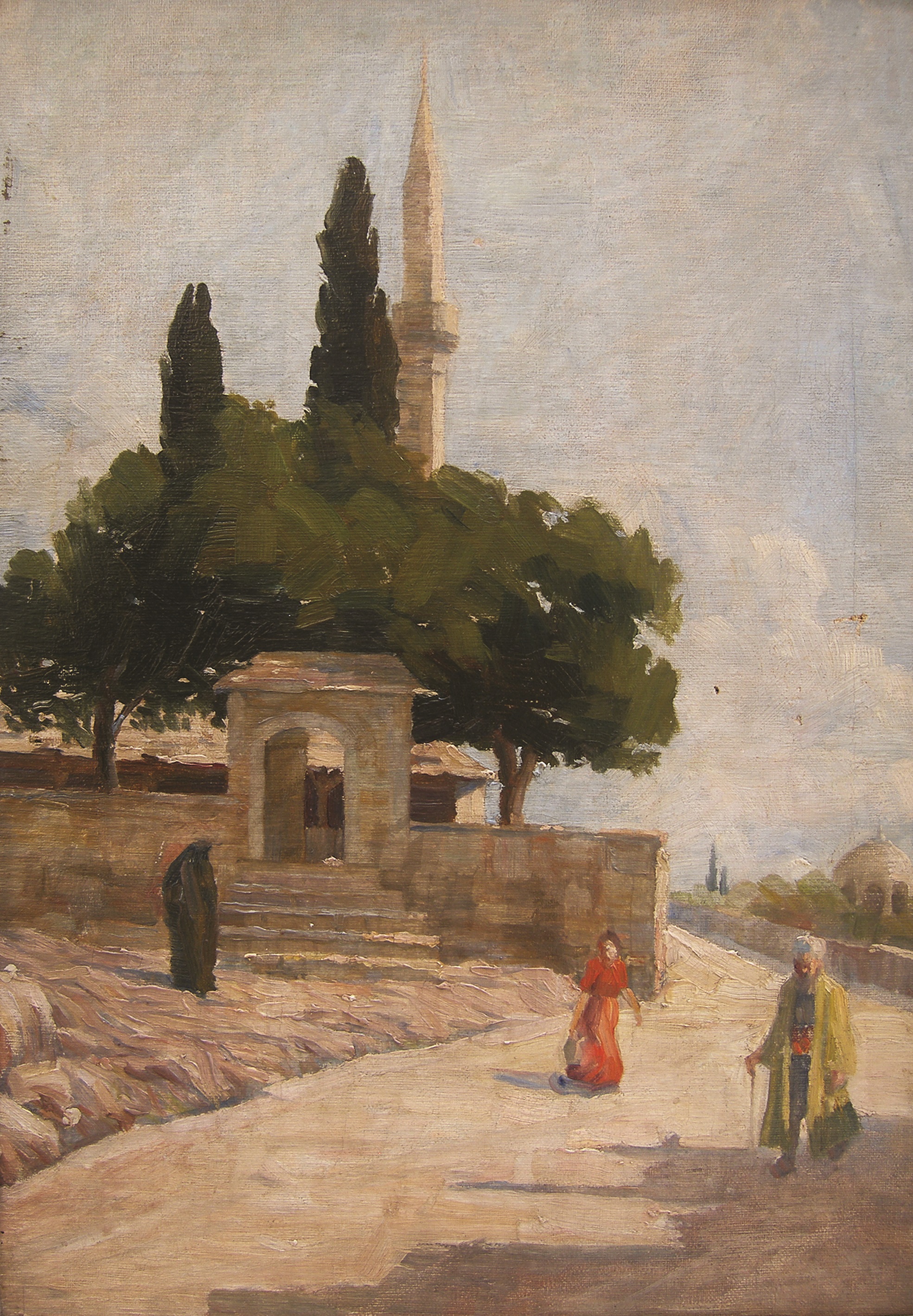
16-29. March 2017.
Radulović, using his delicate color palette on small formats, breathed the first whiff of Impressionist painting into Bosnian and Herzegovinian history of art. As a painter of romantic nature, an active participant in the political life and a great connoisseur of music, he announced the beginning of modern art in our country with his rather small but valuable opus of art works.
He made his first drawing and painting strokes within the gentle atmosphere of his hometown Mostar, which at the time was the center of creation when it came to domestic intelligence. In the fall of 1903 he enrolled into the “Serbian drawing and painting school Riste Vukanović”, where he began studying the academic manner through the classical approach to the elements of painting. One year after he will take part in the “First Yugoslav Exhibition”, hosted in Belgrade, which will result in him deciding to study painting in Europe.
Deciding for Prague, he was admitted to the painting class of the pointillist Vlaho Bukovac in the academic year 1906/7. The works of this period are characterized by dark backgrounds treated with broad brushstrokes, subtle tonal gradations on bright face complexions, and carefully chosen lyrical painting motifs. (Portrait of Lepa Jelić Komljenović).
Alongside Švrakić and Popović, Radulović will open their first joint exhibition in Sarajevo, in the autumn of 1907. Although poorly attended by culturally insensitive public, this exhibition marked the start of domestic painting production and exhibition practice.
He attended the special course in the period from 1907 – 1911 at the same academy in the class of professor Ženišek, who was a liberal educator and excellent watercolorist. At this time, through the „Mane’s painting salon“ in Prague, Radulović will encounter contemporary European painting currents, of which the French and Czech impressionism will leave most trace in his works.
For the first time independent research of light through en plein air (painting outdoors), freer form and striving for naturalistic expression are present. Radulović replaces the motif of a portrait with landscape, and devotes his attention to the atmosphere, fading within the flickering light.
Surrounded by Herzegovinian landscape, which he was ever so fond of, he will boldly tackle painting problems – especially the rhythms of light on painted parties. (Šarić mosque in Mostar)
Works from 1909/10 are new to the concept of Radulović. In addition to the refined palette and shapes that have lost linearity and firmness (drawing completely disappears from the genre of landscape) he now paints using the al prima technique. He applies paint directly from the tube to the canvas without the presence of underpainting. The former meticulous student of Bukovac does not mind that the first coat of paint is also the last one. (Self-portrait)
When he finally gave in to the impressionistic study of pure light and atmosphere, he managed to create universal allegorical depictions of intimacy, femininity and grace realized through slightly misty colors. (Taking a walk)
After the graduate course, in 1911, with a stylishly rounded painting oeuvre, Radulović will travel to Paris. There, overwhelmed and confused by artistic practices, he finds haven in front of the canvases of the old masters, in the Louvre. (Ballerina)
The following year, on his second visit to Paris, his artistic expression is reduced to a peaceful and purified simplicity. Using wide and free brush strokes, with thick layers and new handwriting, he creates allegorical representations of painting moods. (Lodge)
The echo of the Sarajevo assassination in 1914 traveled all the way to Paris, from where Radulović, for the second time makes his way to the front – this time to Skopje. Suffering from intestinal tuberculosis, at the end of March 1916, far from his homeland, Radulović dies at the age of thirty one.
